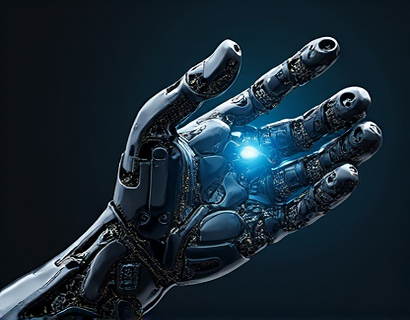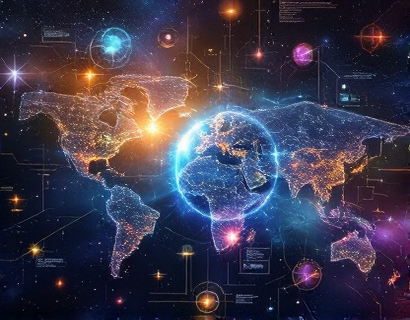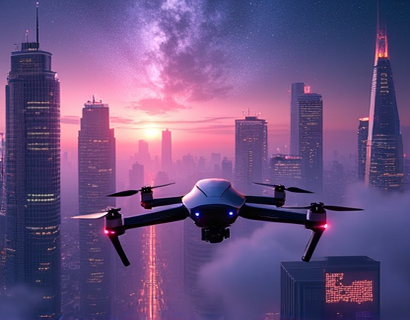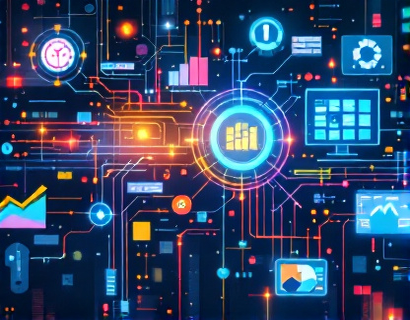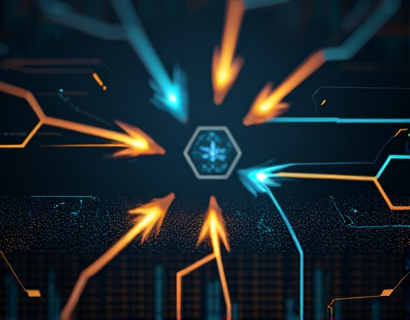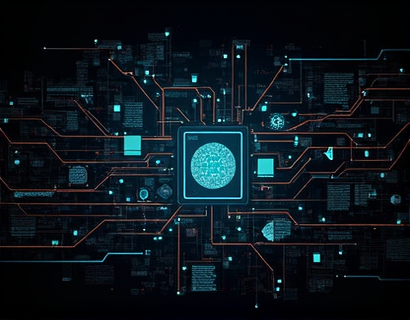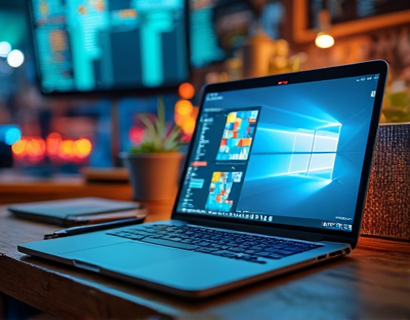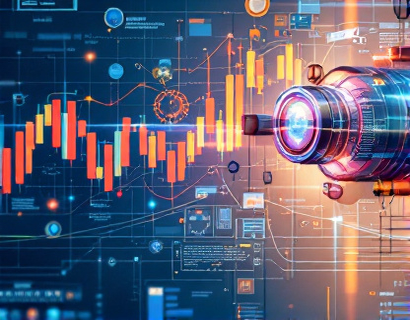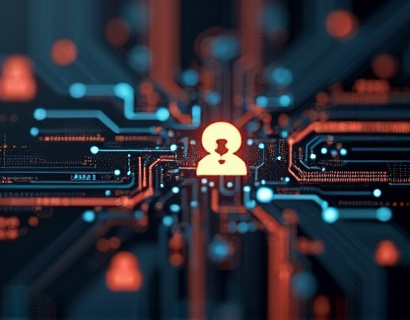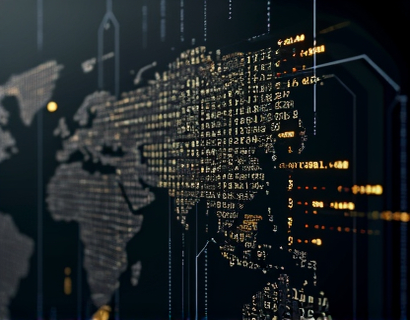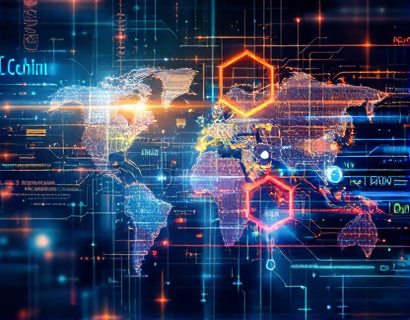AI and Crypto: Catalyzing Digital Transformation for Enhanced User Experiences in the Crypto Tech Nexus
The intersection of artificial intelligence (AI) and cryptocurrency is revolutionizing the digital landscape, paving the way for unprecedented user experiences and seamless integration across various platforms. This synergy is not just a technological marvel but a transformative force that is reshaping how we interact with digital services, particularly within the crypto ecosystem. As tech-savvy individuals, digital innovators, and early adopters increasingly seek advanced digital solutions, understanding the role of AI in enhancing these experiences becomes crucial. This article delves into the dynamic relationship between AI and crypto, exploring how this partnership is driving digital transformation and unlocking new opportunities for users.
The Convergence of AI and Crypto
The convergence of AI and crypto is rooted in the inherent characteristics of both technologies. AI, with its ability to process vast amounts of data, learn from patterns, and make intelligent decisions, complements the decentralized, secure, and transparent nature of blockchain technology. This combination creates a powerful toolset for developing innovative applications and services that were previously unimaginable. The crypto tech nexus, where these technologies intersect, is becoming a hotbed of creativity and innovation, attracting a diverse array of players from fintech to gaming.
Enhanced Security through AI
One of the most significant benefits of integrating AI into the crypto space is the enhancement of security measures. Cryptocurrencies and blockchain-based systems are not immune to threats such as hacking, fraud, and cyberattacks. AI algorithms can analyze vast datasets in real-time to detect anomalies and potential security breaches, providing a proactive defense mechanism. Machine learning models can identify patterns indicative of malicious activities, enabling quicker responses and more robust security protocols. This not only protects user assets but also builds trust in the crypto ecosystem, a critical factor for widespread adoption.
Smart Contracts and AI Optimization
Smart contracts, self-executing contracts with the terms directly written into code, are a cornerstone of blockchain technology. AI can optimize these contracts by analyzing complex scenarios and suggesting improvements to ensure they function efficiently and securely. AI can also automate the process of verifying and executing smart contracts, reducing the need for intermediaries and lowering transaction costs. This synergy not only streamlines operations but also enhances the reliability and accuracy of smart contract executions, making them more appealing for a wide range of applications.
Personalized User Experiences
AI-driven personalization is transforming the way users interact with crypto services. By leveraging machine learning algorithms, platforms can analyze user behavior, preferences, and historical data to provide tailored recommendations and services. For instance, a crypto trading platform can use AI to analyze a user's trading patterns and suggest optimal entry and exit points, customize the user interface based on usage habits, and even offer personalized educational content to help users improve their trading skills. This level of personalization not only enhances user satisfaction but also increases engagement and loyalty.
Predictive Analytics in Crypto Markets
Predictive analytics, powered by AI, is revolutionizing the way traders and investors approach the crypto markets. By analyzing historical data, market trends, and real-time information, AI models can forecast price movements and identify potential opportunities or risks. This predictive capability allows users to make more informed decisions, potentially leading to better investment outcomes. AI-driven trading bots can execute trades based on these predictions, operating 24/7 without the emotional biases that often affect human traders. This not only democratizes access to advanced trading strategies but also enhances the overall efficiency of the market.
Decentralized Finance (DeFi) and AI
Decentralized Finance (DeFi) is a rapidly growing sector within the crypto ecosystem, offering a range of financial services such as lending, borrowing, and yield farming. AI plays a crucial role in optimizing DeFi protocols by improving risk management, enhancing liquidity, and personalizing financial products. AI algorithms can assess creditworthiness more accurately, reducing the risk of default and enabling more accessible financial services. Additionally, AI can optimize liquidity pools, ensuring that they are well-balanced and efficient, which is essential for the smooth functioning of DeFi platforms.
User Interface and Experience (UI/UX) Enhancements
The user interface and experience (UI/UX) of crypto applications are critical for user adoption and retention. AI can significantly enhance UI/UX by providing insights into user behavior and preferences, allowing developers to create more intuitive and user-friendly interfaces. AI-powered chatbots and virtual assistants can offer real-time support and guidance, helping users navigate complex crypto platforms with ease. Moreover, AI can analyze user feedback and sentiment, enabling continuous improvement of the user experience based on actual user needs and preferences.
Cross-Chain Interoperability and AI
Cross-chain interoperability is essential for the seamless integration of different blockchain networks, enabling a more connected and efficient crypto ecosystem. AI can facilitate this by optimizing the processes involved in cross-chain transactions, ensuring they are secure, fast, and cost-effective. AI algorithms can manage the complexities of different blockchain protocols, automate the conversion of assets between chains, and monitor the integrity of transactions. This not only enhances the user experience by simplifying cross-chain interactions but also promotes the adoption of multiple blockchain solutions.
Challenges and Considerations
While the integration of AI and crypto offers numerous benefits, it also presents several challenges that need to be addressed. One of the primary concerns is the regulatory landscape. As AI and crypto continue to evolve, regulators are grappling with how to oversee these technologies to prevent misuse and ensure compliance. Developers and platforms must stay informed about regulatory changes and implement robust compliance measures. Additionally, the ethical use of AI is a critical consideration, ensuring that AI algorithms are transparent, fair, and do not perpetuate biases.
Another challenge is the technical complexity involved in integrating AI with existing crypto systems. This requires a skilled workforce capable of developing and maintaining these advanced solutions. Education and training programs are essential to build a competent workforce that can drive this integration forward. Furthermore, the computational resources required for AI operations can be substantial, necessitating efficient and sustainable infrastructure solutions.
Future Prospects
The future of AI and crypto is bright, with numerous opportunities on the horizon. As AI technology continues to advance, we can expect even more sophisticated applications in the crypto space. The development of more powerful and efficient AI models will further enhance security, personalization, and predictive analytics. The integration of AI with emerging technologies such as the Internet of Things (IoT) and 5G networks will create new possibilities for decentralized applications and services. The crypto ecosystem is poised to become more intelligent, user-centric, and interconnected, driven by the synergy between AI and blockchain.
For tech-savvy individuals and early adopters, the convergence of AI and crypto represents a frontier of innovation and opportunity. By embracing these technologies, users can experience a new level of engagement and utility in the digital world. As the crypto tech nexus continues to evolve, staying informed and adaptable will be key to harnessing the full potential of this transformative combination.





